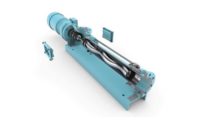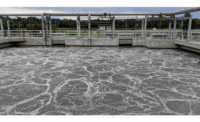Whether through a water dispenser or just by turning on a faucet, most Americans have direct access to water.
This, however, is not the case for citizens in many other nations. Several current water crises, such as the shortage in Cape Town, South Africa, compels all of us to examine how we use our water, and what we can do to conserve and reuse it. While this concern may not seem imminent, 47% of the world’s population can expect to live in areas of high water stress by the year 2030. In addition, water scarcity is expected to displace between 24 million and 700 million people currently living in arid and semi-arid regions of the world.
Several factors are contributing to these water crises, including deforestation, pollution, overgrazing, urbanization, inefficient irrigation and wastewater treatment practices. According to the Global Water Institute, studies show that up to 70% of the world’s aquifers have reached peak water demand. In fact, nearly 50 countries are now officially classified as water stressed.
Furthermore, changing weather patterns have led to prolonged droughts in some regions and increased flooding in others. Lower temperatures are also affecting glaciers and snow packs, impacting freshwater supply and availability. Additionally, freshwater from the world’s underground aquifers is being extracted at unsustainable rates. Population growth, coupled with rising global incomes, is putting pressure on increasingly scarce water supplies and crumbling infrastructure. Water wasted due to leaks and inefficient or outdated facilities is also a major contributor to these crises. In the U.S. alone, an estimated six billion gallons of treated water is lost every day from leaky pipes. The bottom line is water is extremely undervalued globally — and the price of acquiring water is cheaper than implementing water-saving technology.
While implementing water reuse technologies is one way to address the water crisis, there is an understandable concern about recycled water because of the pathogens and contaminants that need to be removed from wastewater and greywater. To avoid any confusion, greywater is wastewater that comes specifically from laundry machines, baths, showers and sinks. It does not come from toilets, urinals, kitchen sinks or dishwashers — that is wastewater. Ultimately, both types of water could be recycled for either subsurface irrigation or toilet flushing. To give people assurances that onsite greywater and treated wastewater are safe for their intended uses, NSF International facilitated the development of NSF/ANSI 350: Onsite Residential and Commercial Water Reuse Treatment Systems.
Developed in response to the world’s looming water crisis, the NSF/ANSI 350 standard establishes criteria for water reuse system materials, design and performance. Certification requires a rigorous 26-week test where a system must achieve effluent levels with overall test averages for carbonaceous biological oxygen demand, total suspended solids, turbidity and E. coli. Over time, greywater and wastewater reuse could contribute to water source stability by reducing potable water demand for non-potable purposes. Using these systems can also reduce greenhouse gas emissions.
Two distinct categories
NSF/ANSI 350 certifies two distinct categories of water reuse treatment systems. The first covers systems found mostly inside homes or offices that treat greywater for flushing toilets, urinals or bidets. Similar to a water softener you might find in residential basements, greywater is plumbed to a separate greywater treatment system. These systems treat the greywater using different types of technologies such as chlorination, membrane filtration, media filtration, ozone and UV light.
The second category NSF/ANSI 350 certifies is “high-end” onsite wastewater treatment systems that treat wastewater (i.e. sewage) for subsurface irrigation uses. While more sophisticated than their greywater counterparts, wastewater systems use similar treatment technologies. They are also mostly in-ground and installed outdoors. The specific end uses for the water they treat are determined by the system owner, design professionals and local regulatory officials.
The International Residential Code, International Plumbing Code, Uniform Plumbing Code and International Green Construction Code all require water reuse systems to meet the requirements of NSF/ANSI 350. The same is true for plumbing codes in the states of California, Ohio and Colorado. In addition, NSF/ANSI 350 certified systems can earn credits during LEED certification.
NSF facilitates developing standards that promote new technology, protect public health and give people access to life-sustaining necessities such as water. Standards like NSF/ANSI 350 provide a means to empower manufacturers to develop innovative yet safe ways that could help solve a critical problem plaguing millions.
More specifically, utilizing systems certified under NSF/ANSI 350 can help minimize public health risks and improve people’s potable water use rates while reducing energy use and emissions. As water scarcity and drought conditions persist globally, onsite greywater and wastewater reuse creates the opportunity to reduce the human impact on natural environments and the use of drinkable water for non-potable purposes.




